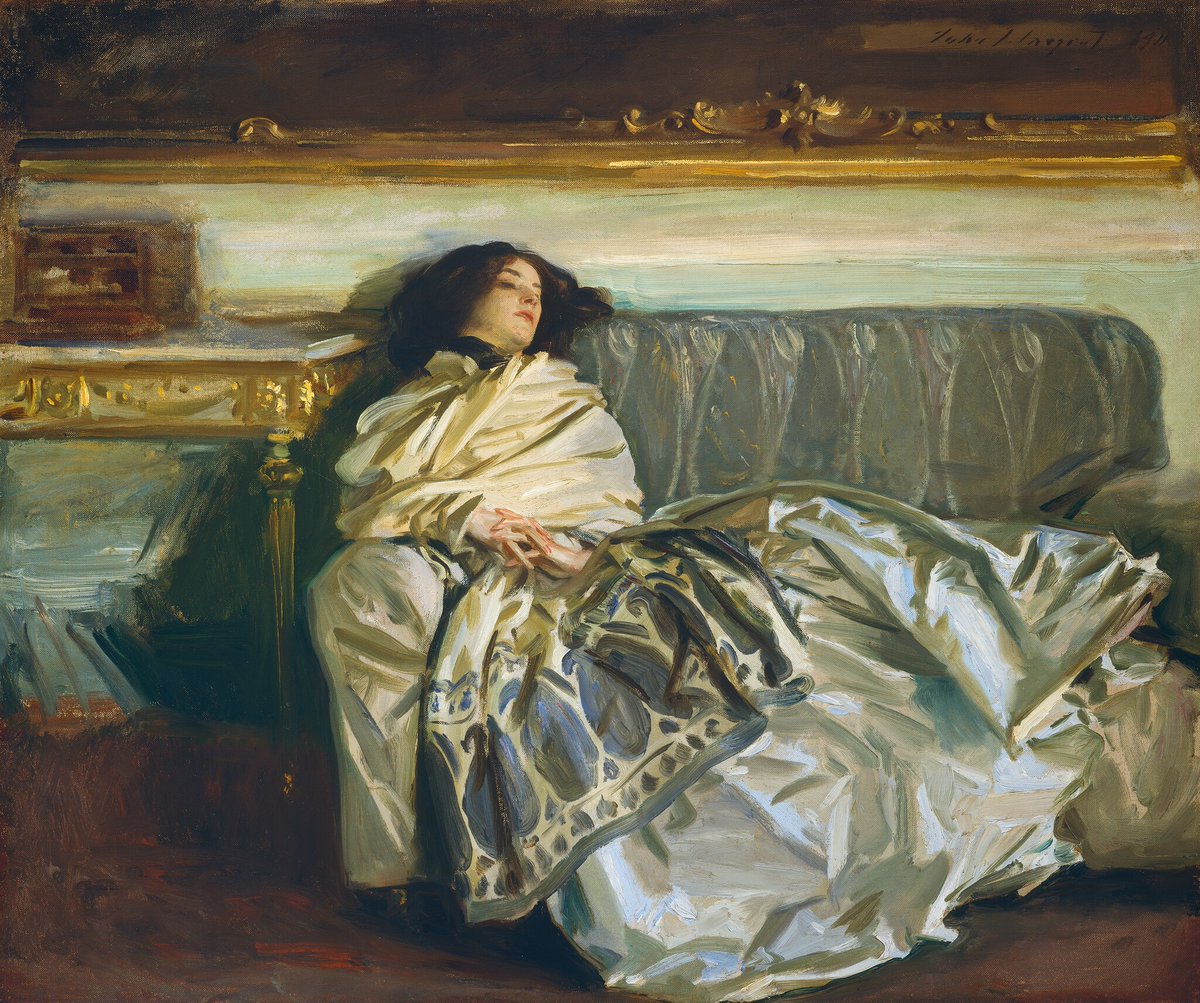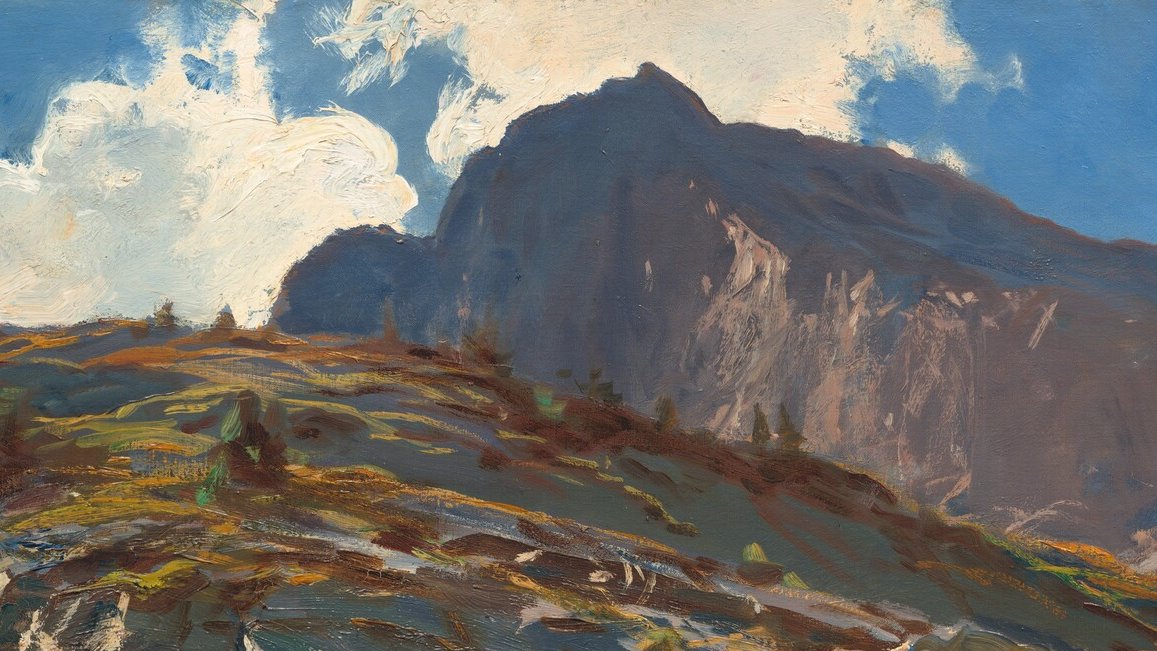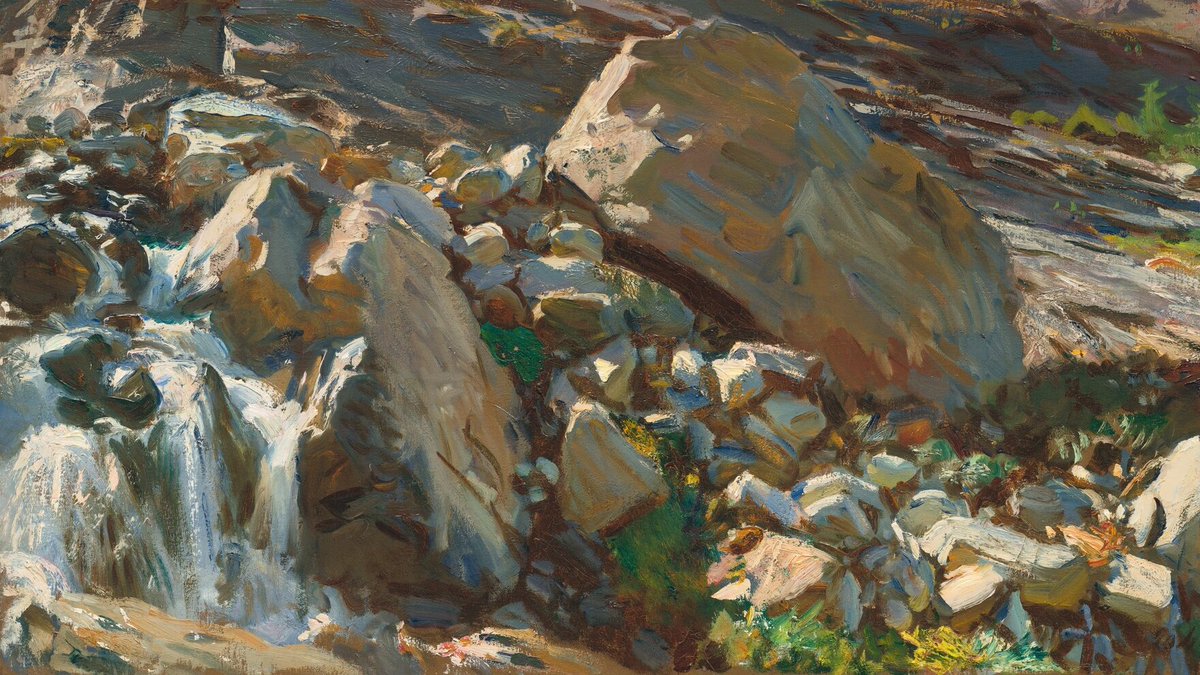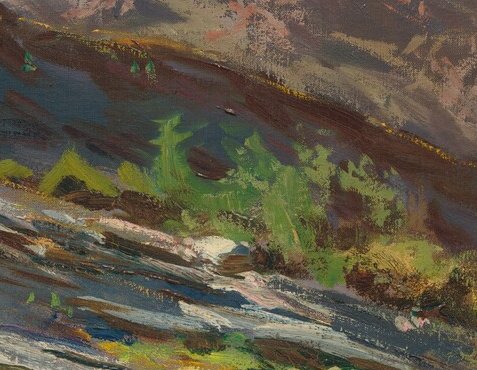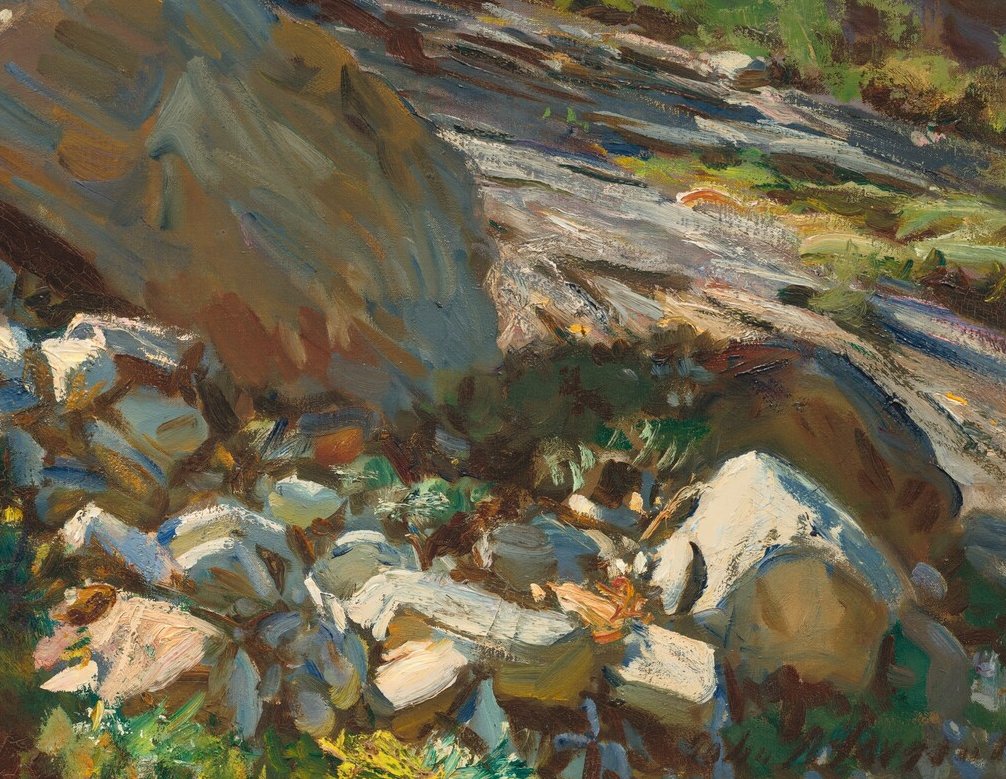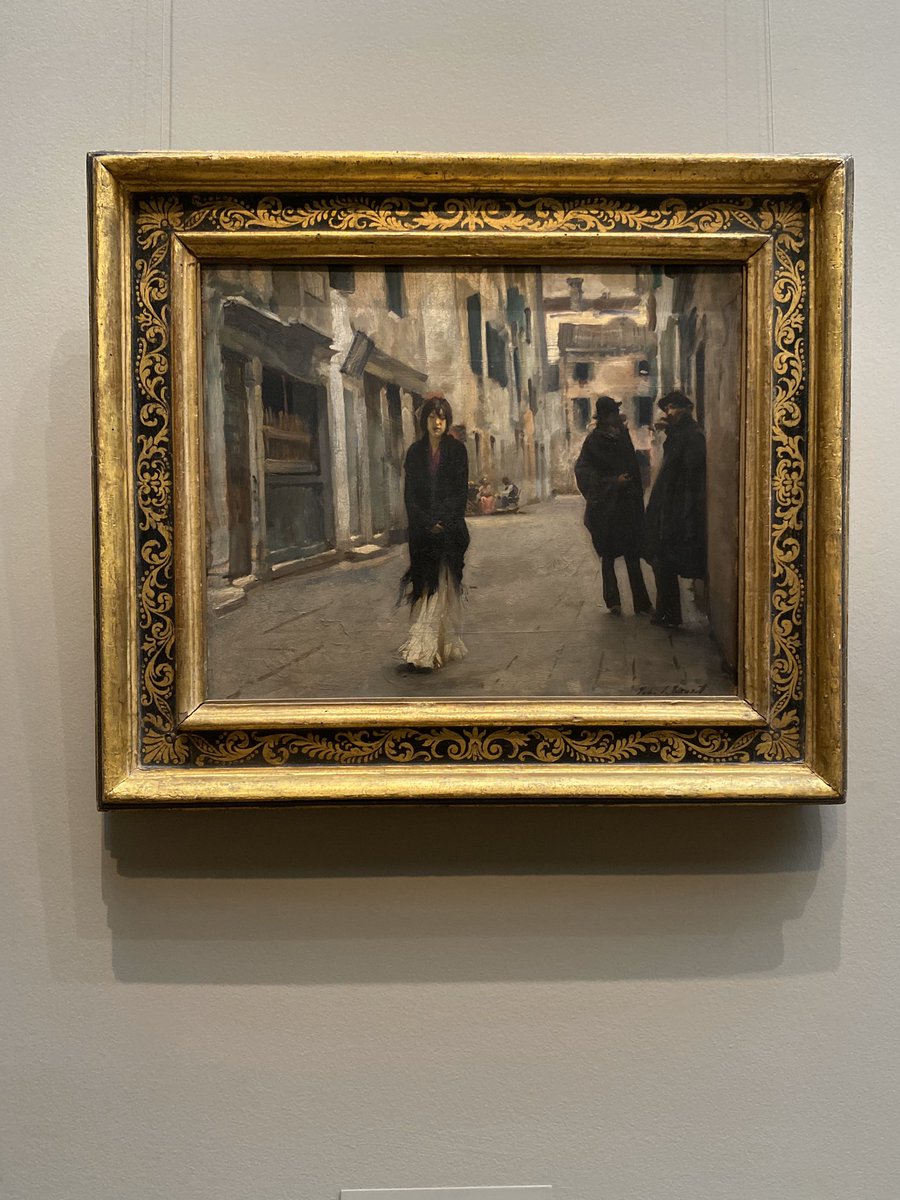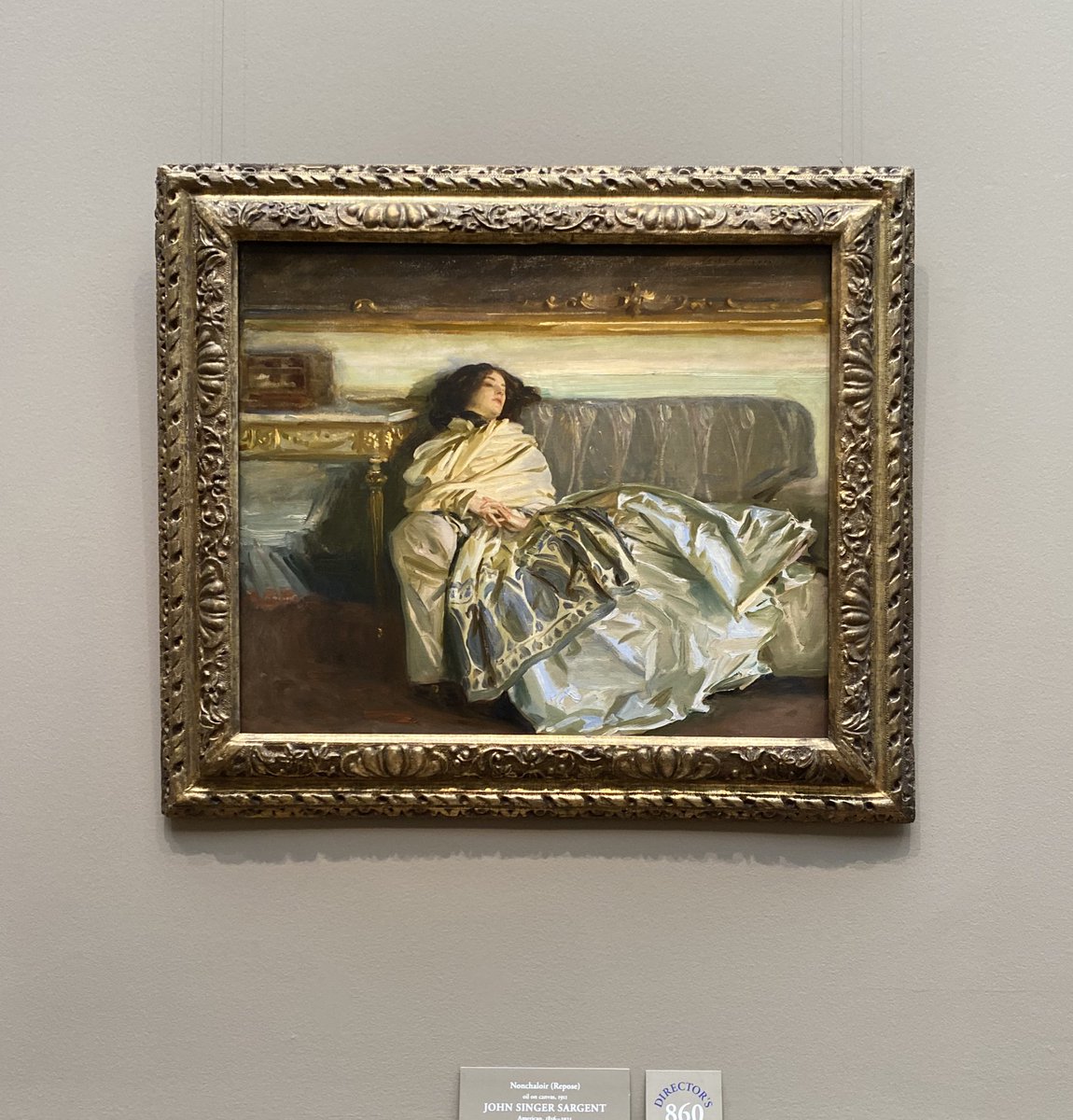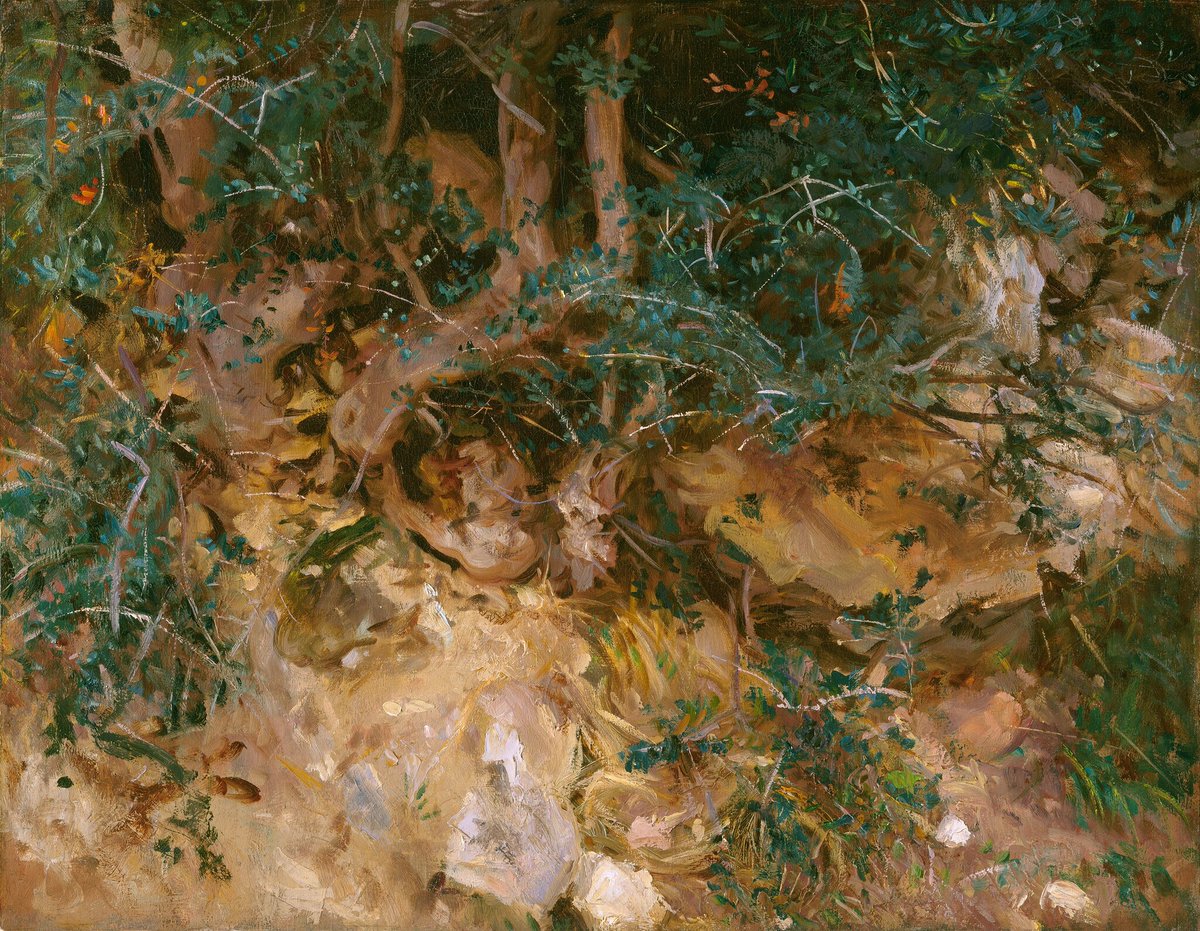Today we are taking a tour of West Building gallery 70, focusing on paintings by John Singer Sargent. #MuseumFromHome
See a list of all the works: http://go.usa.gov/xvbb4 ">https://go.usa.gov/xvbb4&quo...
See a list of all the works: http://go.usa.gov/xvbb4 ">https://go.usa.gov/xvbb4&quo...
Our tour is led (from home) by Sarah Cash, associate curator in the department of American and British Paintings.
Following the Civil War, many wealthy American art collectors and aspiring artists traveled to Europe to immerse themselves in European culture, collecting works by the old masters and contemporary academic painters to adorn their newly built mansions back home.
But in the 1870s and 1880s a dramatic change swept through the art world—a new group of painters, the French Impressionists, rejected the academics’ tightly brushed scenes of mythological and historical subjects.
[Monet, "The Bridge at Argenteuil," 1874, gallery 85]
[Monet, "The Bridge at Argenteuil," 1874, gallery 85]
These artists exerted enormous influence on their contemporaries at home and abroad.
Painters like Sargent and John LaFarge depicted landscapes, intimate scenes of everyday life, still lifes, and more and embraced the use of natural light, rapid brushwork, and a bright palette.
Painters like Sargent and John LaFarge depicted landscapes, intimate scenes of everyday life, still lifes, and more and embraced the use of natural light, rapid brushwork, and a bright palette.
The expatriate Sargent, hoping to escape the rigors of his highly successful portrait practice, reveled in portraying the seaside of Brittany, the back alleys of Venice, picturesque Alpine passes, and his friends and family members.
[Photo of Sargent from 1880 by Paul Berthier]
[Photo of Sargent from 1880 by Paul Berthier]
Before his rapid rise to fame as a portraitist, the young Sargent loved to sketch the sea and coastal life while traveling with his family in France.
In the summer of 1877, to prepare for ”En route pour la pêche,” he made numerous pencil and oil sketches depicting the quiet fishing village of Cancale, on the north coast of Brittany.
[Study from the collection of @TerraAmArt]
[Study from the collection of @TerraAmArt]
In the completed painting from 1878, a group of women and children set out to gather fish and shellfish from shallow pools for their evening dinner.
Set against the broad beach at low tide, the town& #39;s quay and lighthouse, and cloud-filled blue skies, the people are arranged along the light-dappled shore like figures on a classical frieze.
While this painting gives an impression of spontaneity and facile execution, Sargent devoted an extraordinary amount of effort to preparing it for the 1878 Paris Salon. Even before the exhibition closed, the painting was purchased, marking the second sale of Sargent& #39;s career.
Sargent executed “Street in Venice” in 1882, capturing a transitional moment when his model, walking near Venice’s Grand Canal, is being observed by one of two men conversing before a stone doorway.
Her eyes half-closed, she is self-absorbed and aloof, unaware that she is being watched. She holds a black shawl around her elegant, elongated figure for warmth.
Both bearded men, who wear similar fur-lined cloaks and low-brimmed hats, are based on the same unidentified model. Their nonchalant attitude and the leisurely appearance of the people seated at a street corner in the middle, suggest that this occurs during the afternoon siesta.
This is not the Venice of Sargent’s sparkling watercolors.
[“Campo dei Frari, Venice.” c. 1880, watercolor over graphite on wove paper, Corcoran Collection]
[“Campo dei Frari, Venice.” c. 1880, watercolor over graphite on wove paper, Corcoran Collection]
Instead, this takes place in the dilapidated back alleys of working-class neighborhoods.
Sargent& #39;s vision of Venice has much in common with those of American writers like William Dean Howells, who described the aura of mystery behind the city& #39;s popular tourist attractions.
Sargent& #39;s vision of Venice has much in common with those of American writers like William Dean Howells, who described the aura of mystery behind the city& #39;s popular tourist attractions.
Howells recollected how "...in Venice a woman has to encounter upon the public street a rude license of glance...which falls little short of outrage."
Upon its first exhibition in Paris in 1882, a critic wrote: "Here we do not see either the Grand Canal or Saint Mark& #39;s square; all that is banal and hackneyed. Mr. Sargent leads us to modest meeting places and dark, shallow rooms, all black, pierced through by a ray of sunlight.”
Despite his success as one of the most sought–after portraitists of the late Victorian era, Sargent eventually became exasperated by the whim and vanities of prominent sitters. “No more paughtraits,” he wrote in 1907.
["Margaret Stuyvesant Rutherfurd White," 1883, gallery 69]
["Margaret Stuyvesant Rutherfurd White," 1883, gallery 69]
“Nonchaloir (Repose)” (1911) shows Sargent& #39;s niece and muse, Rose-Marie Ormond.
In keeping with his newfound preference for informal figure studies, it is not a traditional portrait; rather, it depicts Rose–Marie as a languid, anonymous figure absorbed in poetic reverie.
In keeping with his newfound preference for informal figure studies, it is not a traditional portrait; rather, it depicts Rose–Marie as a languid, anonymous figure absorbed in poetic reverie.
Rose-Marie’s cashmere shawl, the oversized paisley pattern of which echoes that of the sofa covering, appears in several other Sargent paintings of family and friends, including this watercolor of Rose-Marie, “The Cashmere Shawl” (1911) from the collection of @mfaboston.
Sargent seems to have been documenting the end of an era, for the lingering aura of “fin–de–siècle” gentility and elegant indulgence conveyed in “Repose” would soon be shattered by massive political and social upheaval in the early 20th century.
In his turn away from portraiture in 1907/1908, Sargent also began to undertake landscape and figure paintings in oils and watercolors during leisure visits to picturesque locales with friends and relatives.
Sargent probably visited and sketched the view of the great Alpine pass in Switzerland near the border of Italy depicted in “Simplon Pass” as early as 1904, and returned for extended visits in 1909, 1910, and 1911.
More than simply a document of the distinctive silhouette of the Hübschhorn and its surroundings, the view is a study of the clear Alpine light and air on the rocky terrain.
The seemingly infinite variety of brushwork that endowed Sargent& #39;s vibrant portraits also enlivens this landscape, describing the rushing stream at left, the colorful vegetation, and the dazzling sunlight sweeping across the foreground.
Here, too, light and shade define strong masses; while the mountain is mostly in deep shadow, passages of mauve emphasize its steep face. Thin, hazy clouds and pockets of snow connect its long slope to the brilliant sky above, which in turn harkens back to the sunlit foreground.
Thanks for following along on today’s tour of paintings by John Singer Sargent in gallery 70! We’ll be back another day to take a closer look at the works by his contemporaries.
If you’d like to learn more about these works, dive into these free PDFs of two related publications:
American Paintings of the Nineteenth Century: http://go.usa.gov/xvbV4 ">https://go.usa.gov/xvbV4&quo...
Corcoran Gallery of Art: American Paintings to 1945: http://go.usa.gov/xvbV2 ">https://go.usa.gov/xvbV2&quo...
American Paintings of the Nineteenth Century: http://go.usa.gov/xvbV4 ">https://go.usa.gov/xvbV4&quo...
Corcoran Gallery of Art: American Paintings to 1945: http://go.usa.gov/xvbV2 ">https://go.usa.gov/xvbV2&quo...
And for today’s #MuseumMomentofZen, a beautiful bit of nature in this detail of Sargent’s “Valdemosa, Majorca: Thistles and Herbage on a Hillside” (1908)—a reminder that beauty can be found everywhere, even among the thistles and rocks.

 Read on Twitter
Read on Twitter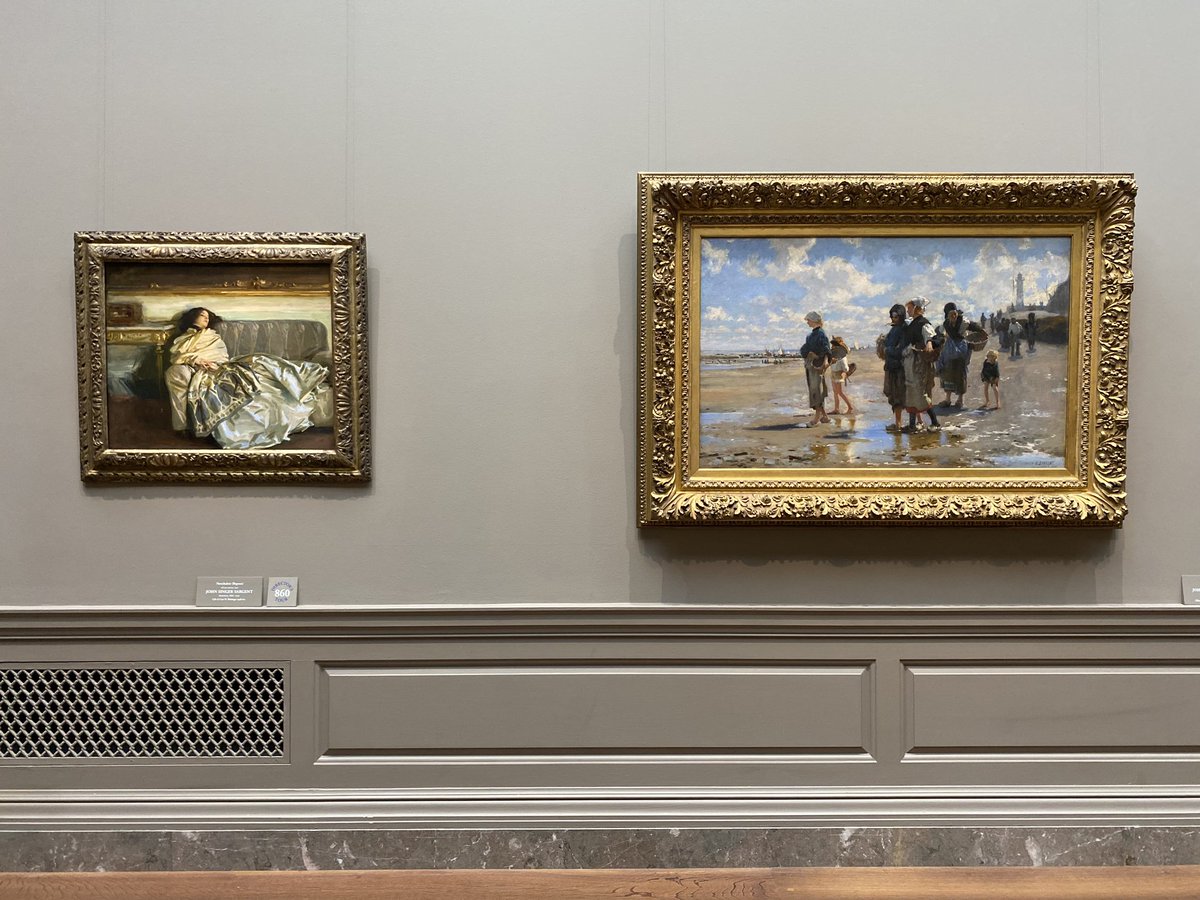

![But in the 1870s and 1880s a dramatic change swept through the art world—a new group of painters, the French Impressionists, rejected the academics’ tightly brushed scenes of mythological and historical subjects.[Monet, "The Bridge at Argenteuil," 1874, gallery 85] But in the 1870s and 1880s a dramatic change swept through the art world—a new group of painters, the French Impressionists, rejected the academics’ tightly brushed scenes of mythological and historical subjects.[Monet, "The Bridge at Argenteuil," 1874, gallery 85]](https://pbs.twimg.com/media/EVB5gVQX0AMGYCY.jpg)
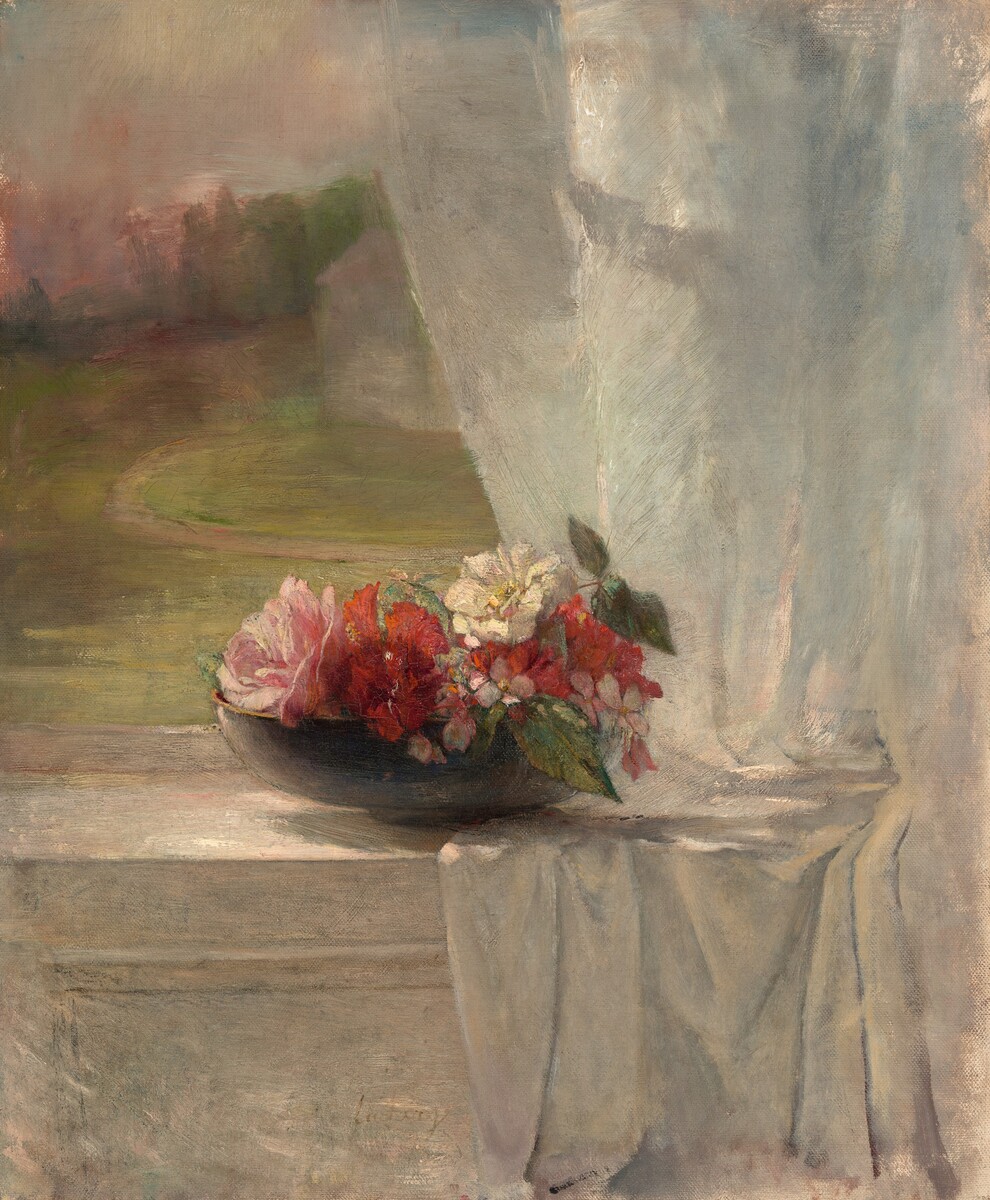
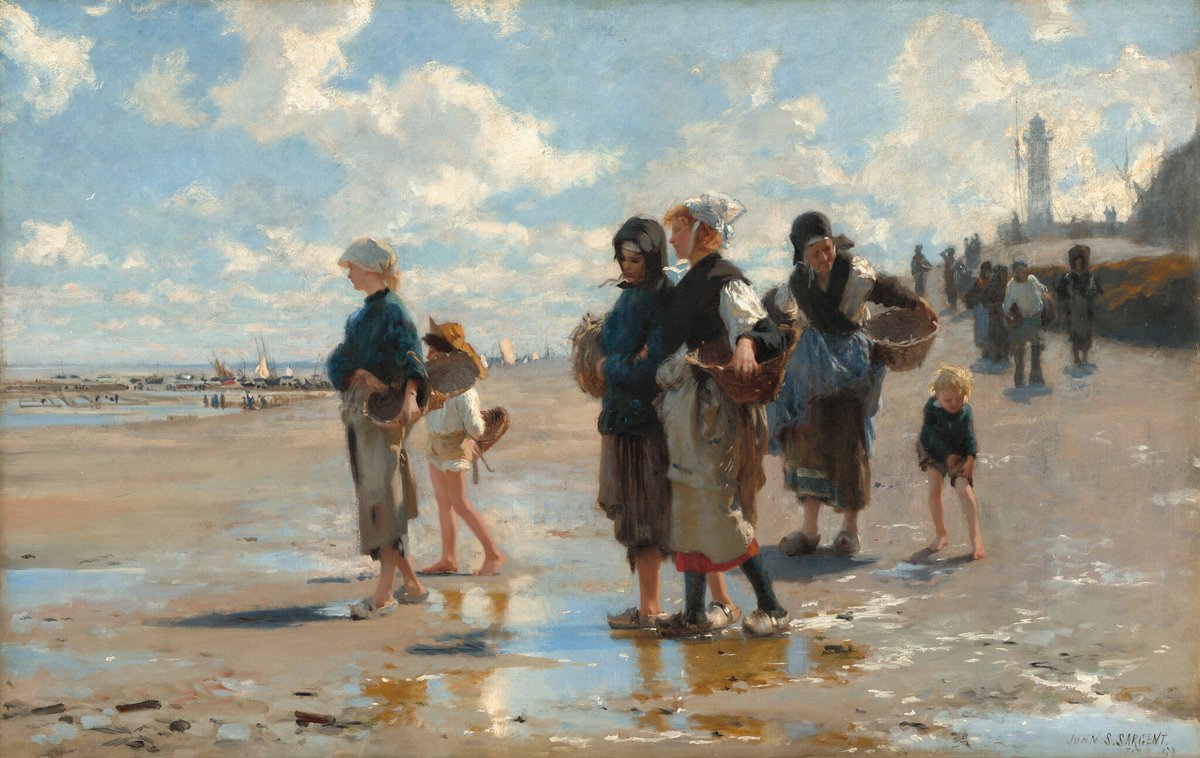
![The expatriate Sargent, hoping to escape the rigors of his highly successful portrait practice, reveled in portraying the seaside of Brittany, the back alleys of Venice, picturesque Alpine passes, and his friends and family members. [Photo of Sargent from 1880 by Paul Berthier] The expatriate Sargent, hoping to escape the rigors of his highly successful portrait practice, reveled in portraying the seaside of Brittany, the back alleys of Venice, picturesque Alpine passes, and his friends and family members. [Photo of Sargent from 1880 by Paul Berthier]](https://pbs.twimg.com/media/EVB7Cj4WkAA24qS.jpg)
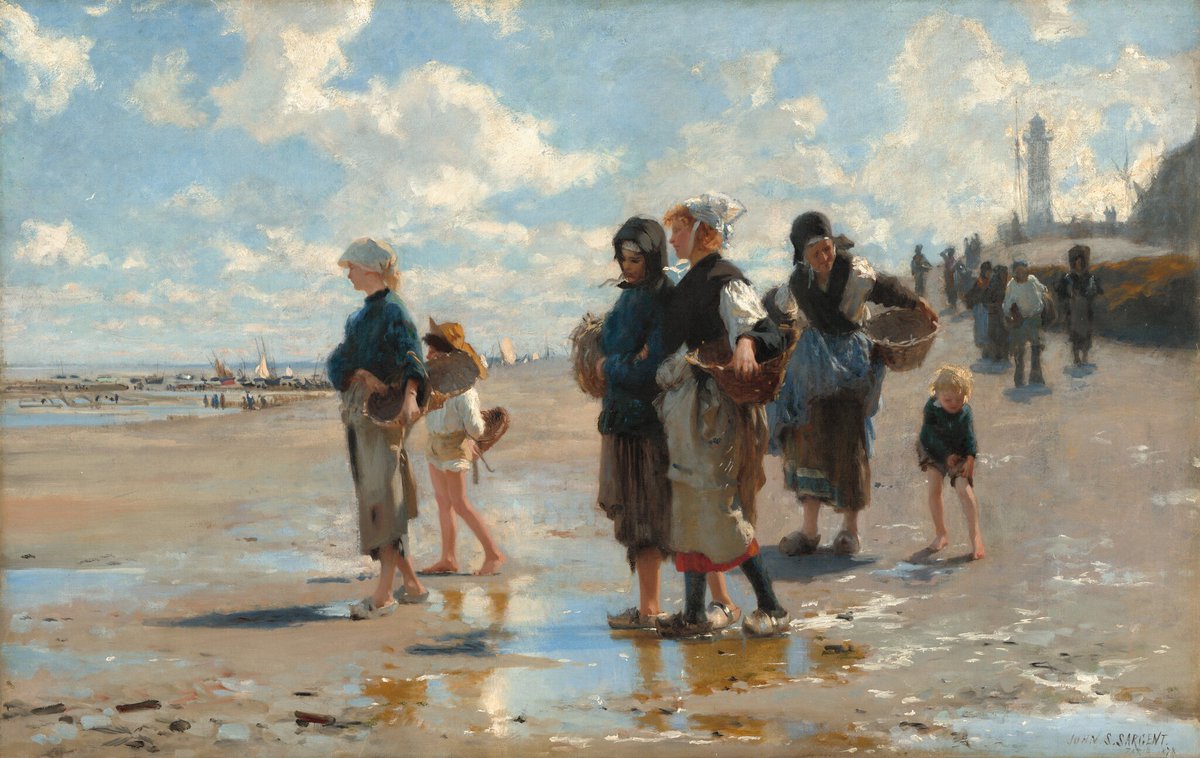
![In the summer of 1877, to prepare for ”En route pour la pêche,” he made numerous pencil and oil sketches depicting the quiet fishing village of Cancale, on the north coast of Brittany.[Study from the collection of @TerraAmArt] In the summer of 1877, to prepare for ”En route pour la pêche,” he made numerous pencil and oil sketches depicting the quiet fishing village of Cancale, on the north coast of Brittany.[Study from the collection of @TerraAmArt]](https://pbs.twimg.com/media/EVB7ngLXgAMmf0r.jpg)
![In the summer of 1877, to prepare for ”En route pour la pêche,” he made numerous pencil and oil sketches depicting the quiet fishing village of Cancale, on the north coast of Brittany.[Study from the collection of @TerraAmArt] In the summer of 1877, to prepare for ”En route pour la pêche,” he made numerous pencil and oil sketches depicting the quiet fishing village of Cancale, on the north coast of Brittany.[Study from the collection of @TerraAmArt]](https://pbs.twimg.com/media/EVB72gNX0AI1S0Y.jpg)
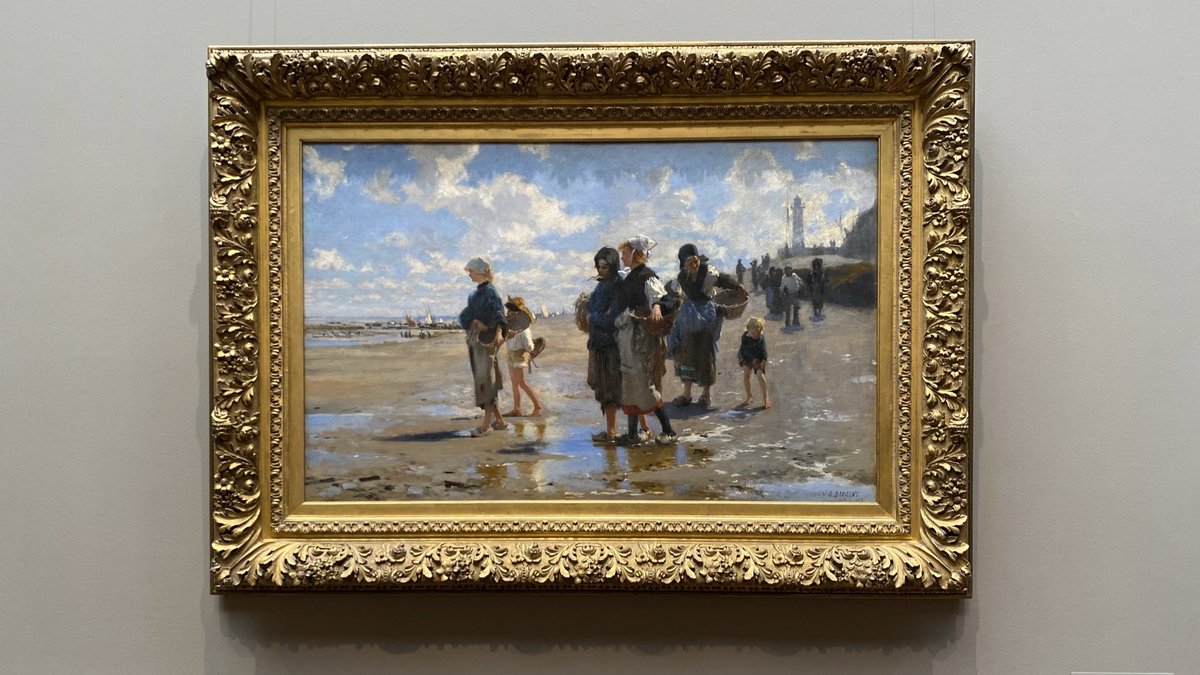

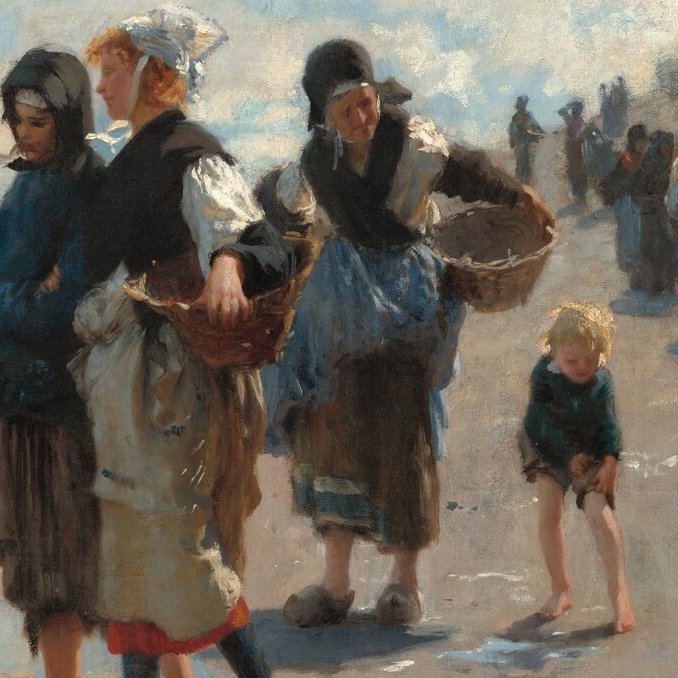
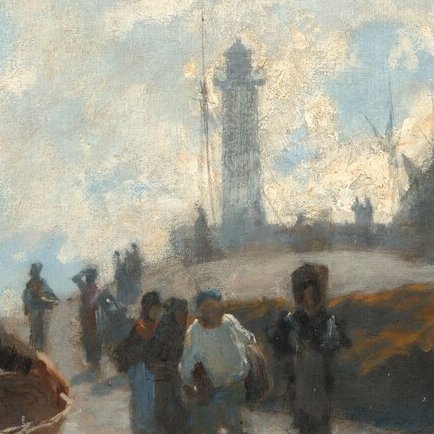
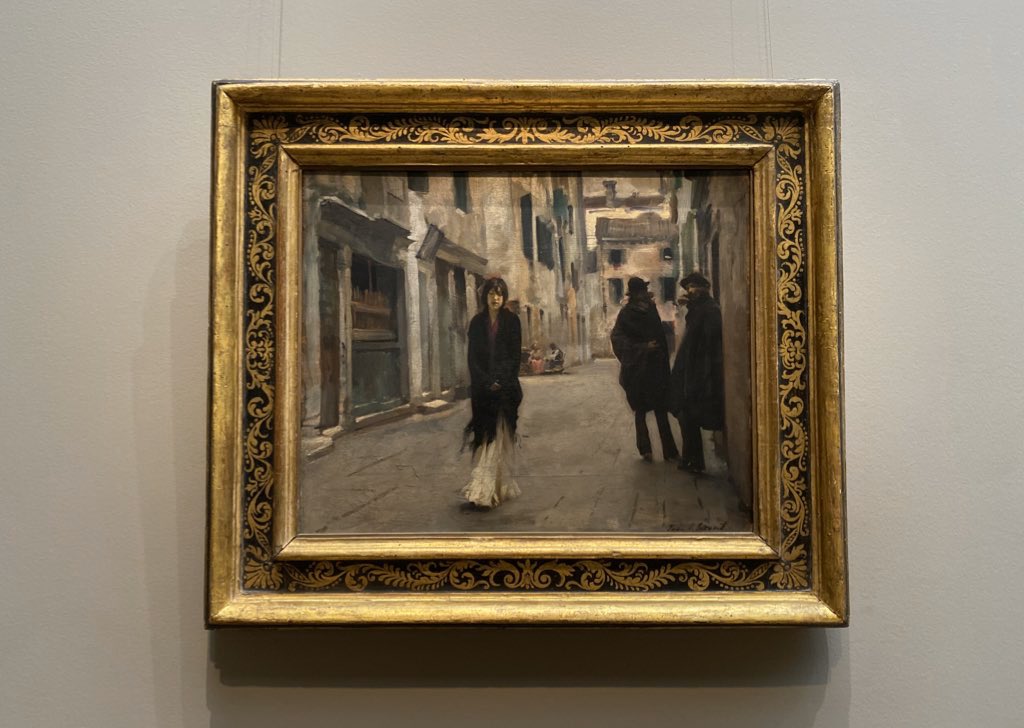
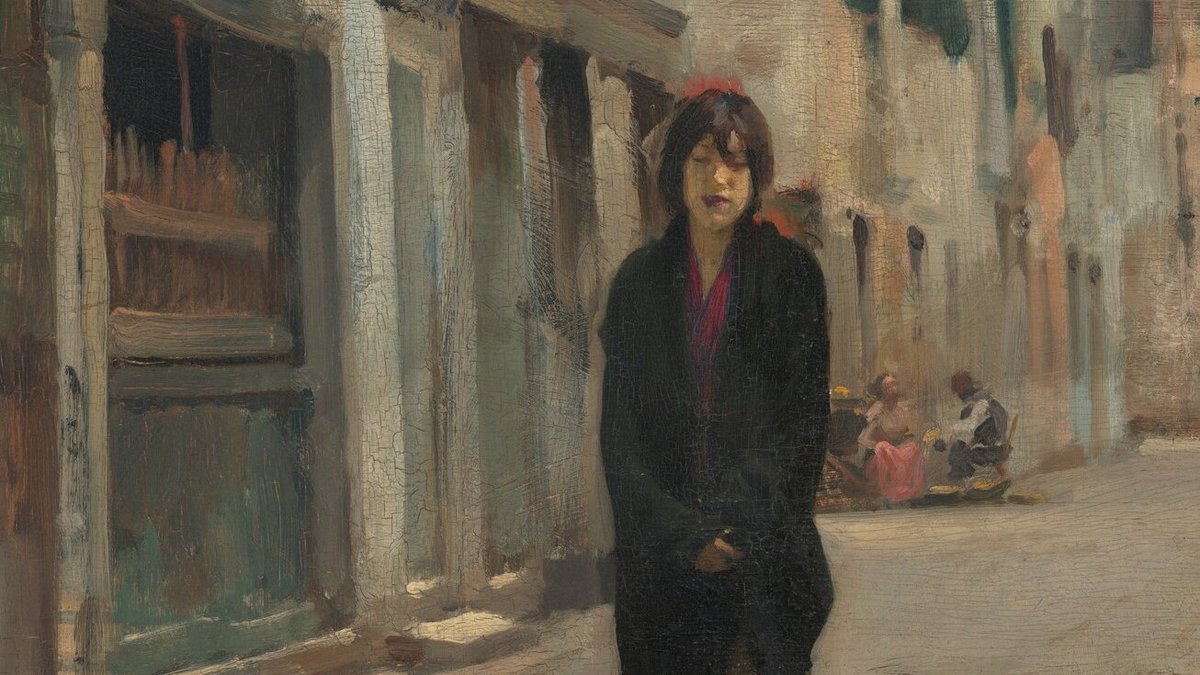
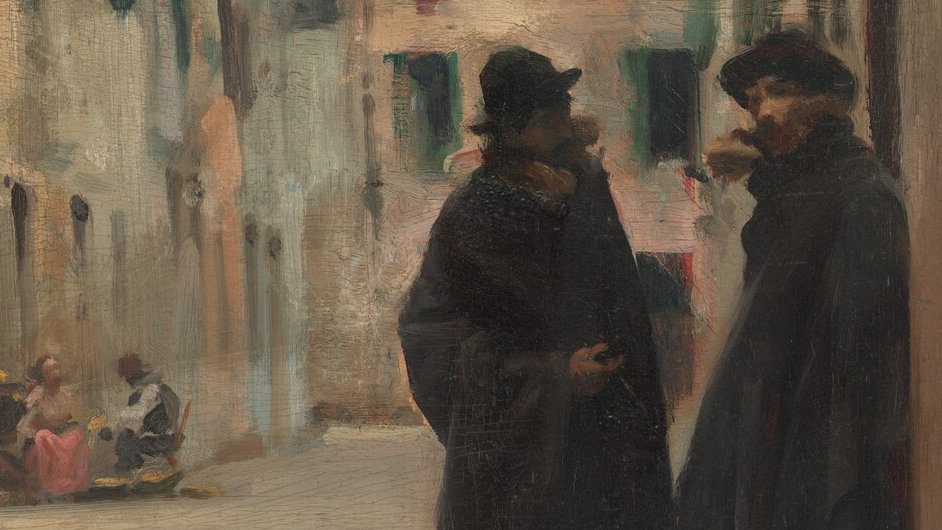
![This is not the Venice of Sargent’s sparkling watercolors.[“Campo dei Frari, Venice.” c. 1880, watercolor over graphite on wove paper, Corcoran Collection] This is not the Venice of Sargent’s sparkling watercolors.[“Campo dei Frari, Venice.” c. 1880, watercolor over graphite on wove paper, Corcoran Collection]](https://pbs.twimg.com/media/EVB_M_aXYAEMJSu.jpg)

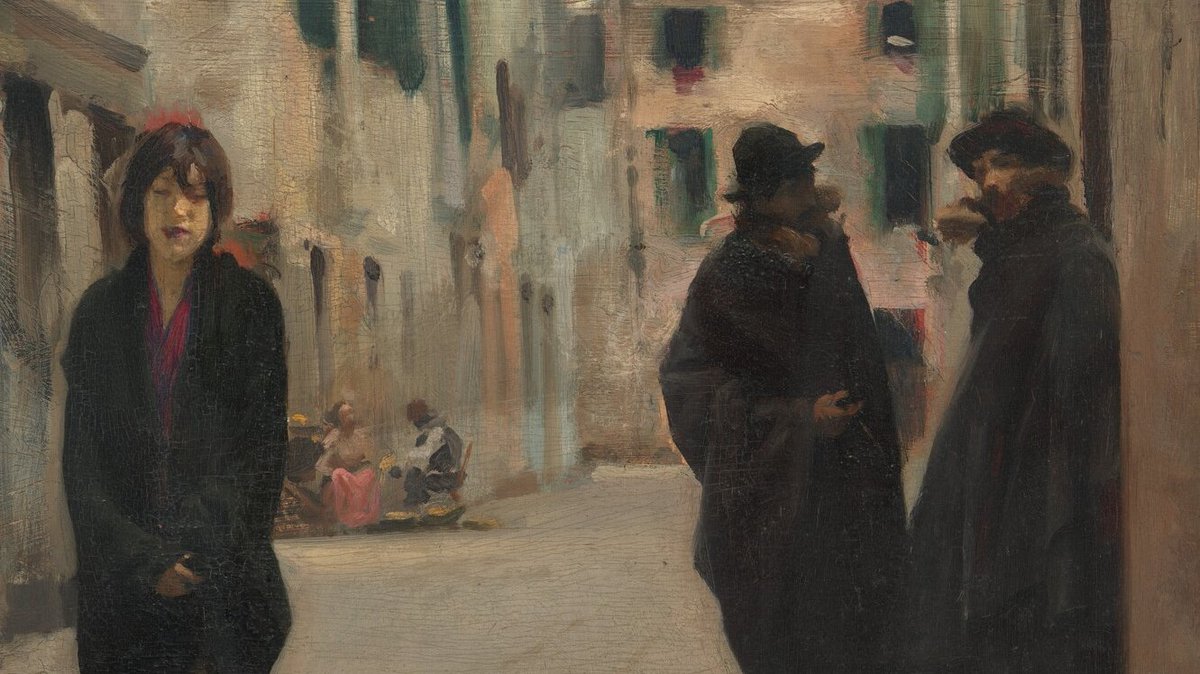
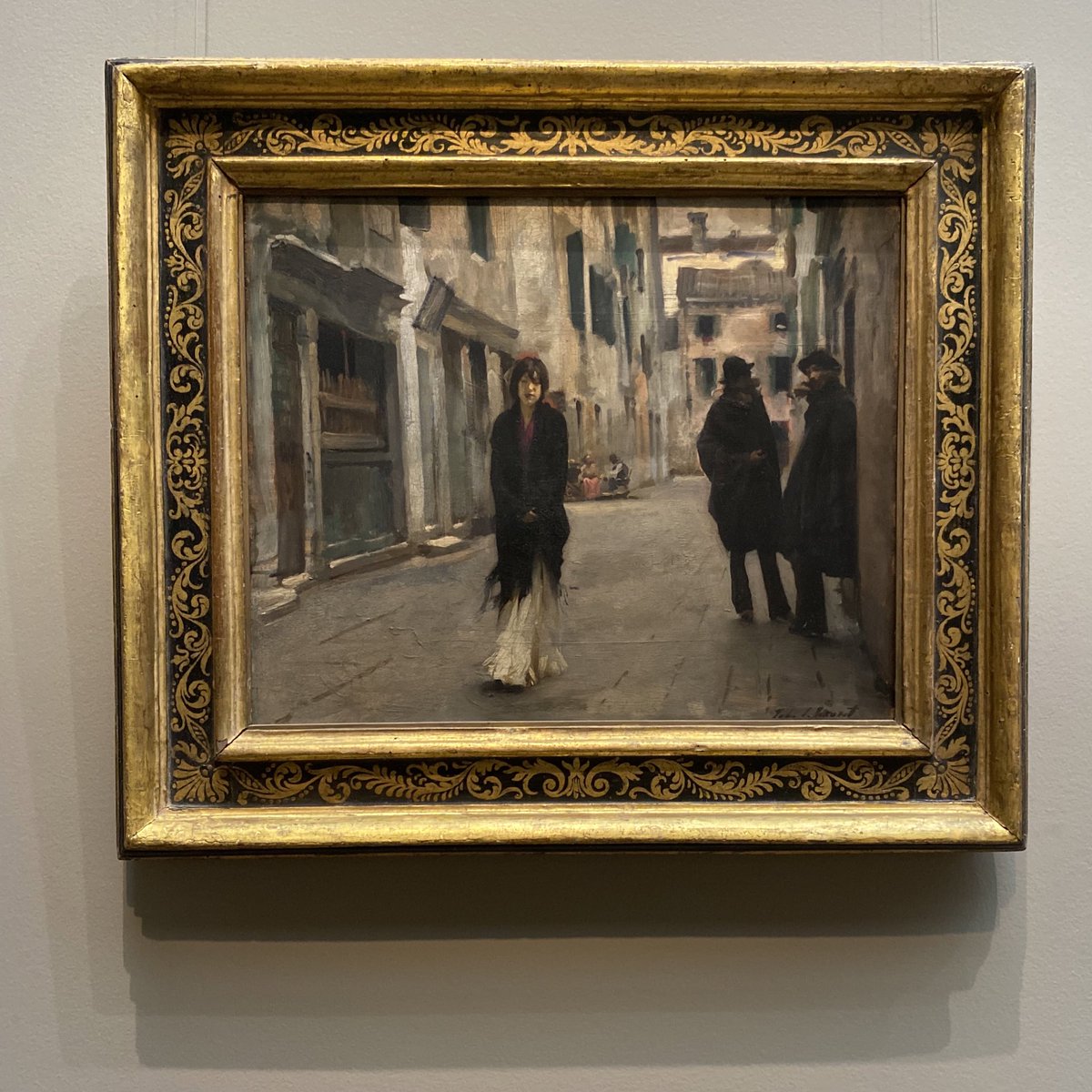
![Despite his success as one of the most sought–after portraitists of the late Victorian era, Sargent eventually became exasperated by the whim and vanities of prominent sitters. “No more paughtraits,” he wrote in 1907.["Margaret Stuyvesant Rutherfurd White," 1883, gallery 69] Despite his success as one of the most sought–after portraitists of the late Victorian era, Sargent eventually became exasperated by the whim and vanities of prominent sitters. “No more paughtraits,” he wrote in 1907.["Margaret Stuyvesant Rutherfurd White," 1883, gallery 69]](https://pbs.twimg.com/media/EVCBXZ1WkAAJmHS.jpg)



